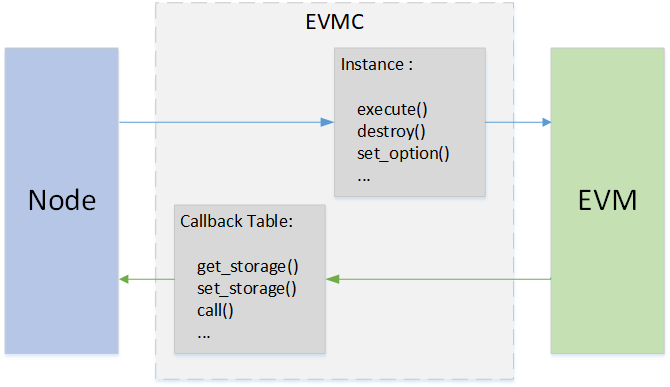Table of contents
- Learn about the concept of a virtual machine (Virtual Machine)
- What is the Ethereum Virtual Machine (EVM)?
- Why do we need EVM?
- What is EVM compatibility?
1. Learn about the concept of a virtual machine (Virtual Machine)
Virtual machine (VM) is a concept that has appeared on computers for a long time. Developers and programmers alike understand that virtual machines can launch various software on compilers as well as non-native ones. In essence, a virtual machine helps to enable a computer program to distribute architecturally neutral data over other software or operating systems.
Virtual machines are considered a useful tool for running programs on different systems at the same time, independent of their native environment. A virtual machine can simulate how one CPU does all the execution on another CPU. For example, Apple's MacBook computers can emulate and run Windows applications/software right on its own operating system.
When it comes to Ethereum, unlike a normal CPU with hardware, the Ethereum virtual machine is understood as a distributed connection of nodes that maintain the virtual machine.
2. What is the Ethereum Virtual Machine (EVM)?
The Ethereum Virtual Machine (EVM) is responsible for powering most of the blockchains in existence. It is seen as the part of Ethereum that implements smart contract implementations.
The EVM is at the heart of the smart contract revolution and also the component that processes billions of US dollars daily. EVM is the environment in which smart contracts and blockchain addresses exist and are visible.
In the simplest terms, an EVM is a decentralized CPU that represents the current state of Ethereum. Accordingly, the current state of the Ethereum virtual machine is a collection of blockchain processes linked and encoded into the main network.
The EVM gives a read result of the current state, called a snapshot. This state is constantly evolving, changing with each new smart contract execution. At any point in time, a snapshot can be taken to see and determine what the standard state of Ethereum is.
Accordingly, the Ethereum virtual machine is a virtual CPU for Ethereum to execute and display the speed of smart contracts. As long as there is a single Ethereum node that is still active, there will continue to be an EVM.
3. Why do we need EVM?
When blockchain technology appeared with Bitcoin, it was understood as simply a type of digital asset for trading in cyberspace. However, unlike Bitcoin, Ethereum shows more than accounts or balances for a single currency, as it has evolved a whole machine state.
EVM adds a neutral contract interpretation to blockchain technology. Ethereum's main website describes itself as a "distributed state machine" as it develops and implements the idea of neutral ownership and facilitation of action. The virtual machine state allows for neutral arbitration on all transactions.
State has become a measure of the real speed and process of blockchain transactions. It is generally understood that the EVM has acted as a catalyst to redefine the way global transactions are completed.
We saw the first blockchain execute smart contracts on Ethereum, which opened up the world of crypto as we know it today. In doing so, the developers behind Ethereum created a new programming language called Solidity. Accordingly, the growth and success of Ethereum has increased the demand for Solidity programmers.
One of the highlights of EVM is that it makes the Ethereum ecosystem compatible and more efficient. Without EVM, blockchain programmers and developers would need more time to develop respective compilers for each operating system.
4. What is EVM compatibility?
EVM compatibility is a popular concept around blockchain and decentralized finance (DeFi). Entire blockchains can be created with EVM compatibility. BNB Chain, Polygon or Cronos are ecosystems that own decentralized applications and protocols that are compatible with EVM.
When a blockchain has EVM compatibility, it means that developers have written code to operate and execute smart contracts in accordance with EVM standards. Many blockchains aim for EVM compatibility to simplify migration from Ethereum to their blockchain.
As more and more blockchains emerge, the need to scale will become even more difficult if a new code is needed. Imagine if every blockchain smart contract needed a new programming language to write contracts. Attracting programmers to this job is not an easy task.
Creating an environment for EVM-compatible code execution will make it easier for Ethereum developers to migrate smart contracts to EVM-compatible chains without having to rewrite code from scratch. This is considered the optimal solution to improve scalability efficiency on Ethereum.





